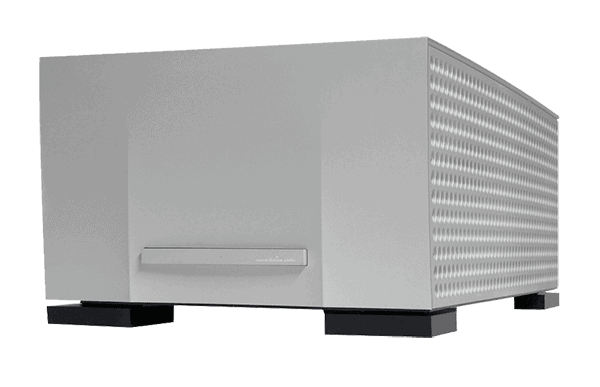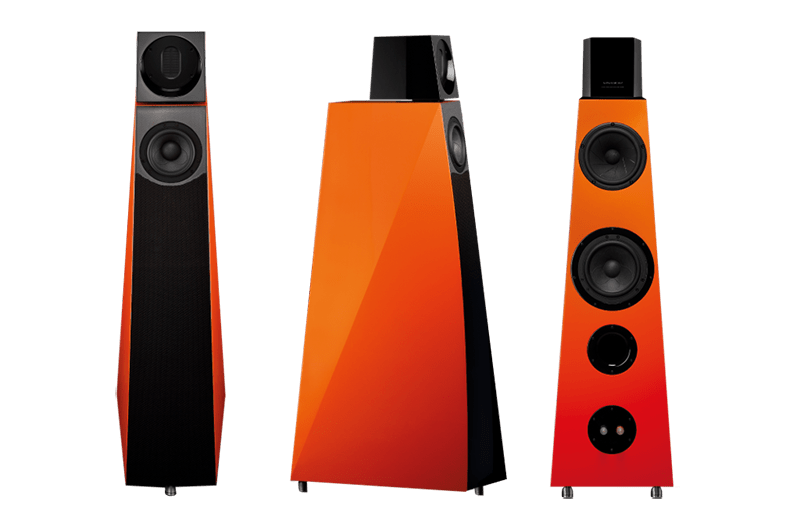In Part Two of this series (Issue 149), we examined the reality that accurate speaker sensitivity ratings have a direct bearing on how suitable the ratings may be when considering varying room sizes and the listener’s distance from the speakers. We also looked at power requirements for driving speakers sufficiently for those respective room sizes. A speaker with a higher sensitivity will produce a greater perceivable volume at a fixed distance and amount of power than one with a lower sensitivity.
Bigger rooms may require more power to be delivered to the speakers in order to achieve the same volume, due to a greater distance to the listening area than would be necessary in a smaller room with a shorter listening distance from the speakers.
Many audiophiles know and appreciate these facts. Some will decide that what they want are speakers with high sensitivity, regardless of room size. It’s a way to maximize the performance and value of your power amplifiers. Why so? Because it affords more headroom from our power amps, which do not have to work so hard with speakers that are more sensitive. A smaller room is also “kinder” and less demanding of a power amp when paired with high-sensitivity speakers than if the speakers are used in a larger room.
Sometimes, when looking at buying a speaker, certain specifications are not readily made available to us, even something as seemingly fundamental as a frequency response graph. Instead, we are just provided with, for example, a frequency response spec of, say, 41 Hz – 30 kHz +/-3 dB. In its own right, this is not hugely informative about what our speaker is capable of, let alone tell us anything that is all that informative about the speaker’s sonic qualities. One could say that this spec basically states that it is a working speaker, functioning within basic parameters, and nothing more!
 Frequency response measurement of a woofer. Courtesy of Wikimedia Commons/Oliokia.
Frequency response measurement of a woofer. Courtesy of Wikimedia Commons/Oliokia.
Let’s make sure that we have the correct amount of amplifier power for our needs in the first place.
Variations in power (and volume) can alter the tonal balance and frequency response of the speaker. (This is on top of the fact that different speakers will have different frequency responses and this too can be part of their tonal character.) We often see 2-way and 3-way loudspeaker designs where the frequency range is split between the bass/midrange and tweeter, or bass, midrange and tweeter drivers. As varying amounts of power are put through the drivers in a speaker, so too, the character of the sound may vary at different frequencies. The different drivers exhibit variations in their audio character as a result of their construction – driver and spider materials, magnets, voice coil/motor design, cabinet colorations and other factors.
An example may be that of a speaker cone which physically changes its shape as it is subject to more power being put through it. As such, it may vary in its measurable frequency response for a given frequency and volume, to say nothing of intermodulation distortion, where two or more signals are played together. These types of effects are reduced and made less noticeable in speakers with good-quality crossovers, drivers and cabinets, and which integrate and time-align everything well.
There is another advantage to mating high-sensitivity speakers with higher-powered amps: this provides more headroom, or power in reserve, that is available to feed our speakers’ demand to respond dynamically to the program material. Again, many of us may already appreciate and understand this, but just how much headroom do we actually need, and is it really that important?
Imagine the following typical scenario: You purchase a 100-watt power amp that is able to give you a nominal/rated 100 dB sound pressure level, and connect up your stereo speakers which are rated at 85 dB sensitivity. (Typically, the manufacturer will not stipulate at what distance the power amp will deliver those 100 watts. Instead, you may get a rating of how much power it will deliver to an 8-ohm-nominal speaker at 1 meter at 2.83 volts output. Not particularly helpful.) However, for a reasonably-sized room of 6,000 cubic feet, these would effectively now have a 75 dB sensitivity at a typical listening position. Good-quality speakers will handle a peak of about 20 dB above their nominal rating, so for short bursts, the speaker should handle 105 dB output. But, what about your 100-watt power amp in such a situation? Suddenly it’s being asked to produce 5 dB more demanded of it than it can deliver, and as a result you either experience a very nasty audible distortion from the power amp clipping, or perhaps the amp switches itself off to protect its circuitry. Neither is a desirable outcome.
If instead you now double the output of your power amp to 200 watts, you have increased your maximum SPL capability to 103dB, approximately doubling of sound intensity (though keep in mind that a 10 dB increase is necessary for the sound to be perceived as twice as loud). Even now, you are still two dB shy of being able to comfortably handle the 105 dB peak or burst. If you again double the power to 400 watts, your power amp is only now capable of outputting 106 dB, or in other words, just 1 dB of headroom when it comes to handling bursts of peak output volume.
 Need power? The Constellation Audio Hercules II monoblock amplifier can deliver 1,100 watts into 8 ohms.
Need power? The Constellation Audio Hercules II monoblock amplifier can deliver 1,100 watts into 8 ohms.The point of the example is to illustrate the advantage of considering buying higher-sensitivity speakers that can actually deliver the peaks they may be subjected to, without subjecting the power amplifier to demands it can’t meet. When playing in larger rooms that necessitate more powerful amplification to cover larger distances to the listening position anyway, this makes consummate good sense, but perhaps your setup would benefit from a larger power amp than you may have initially considered was adequate anyway, if you wish to avoid amplifier clipping and possible damage of your equipment.
If you are generally listening at lower volumes, then these considerations may not initially concern you at all. However, if you want to optimally set up or calibrate your system to sound its best at reference volume levels (for example 75dB), with everything in proportional balance, (and in the case of a home theater/multichannel audio system, with the correct levels and speaker distances programmed into your A/V receiver), you may then actually enjoy it far more when played at much lower volume levels.
But hang on a moment. We may have determined that more clean power is a good thing, but is it really the case that higher-sensitivity speakers can handle more power for dynamic bursts and peaks? If we assume that the answer to that question is yes, does this really help us answer the following which is still somewhat shrouded in mystery: “How loudly are my speakers capable of playing?” And, perhaps equally significantly, “How long might my speakers survive if they are subject to frequent peaks in output?”
These are pertinent questions, because as many of us know, actual power delivery will often be vastly reduced when we run multiple speakers in a surround system of 5.1, 7.4, or larger. Selecting adequate power for your stereo system may be all that matters to many if not most readers, but it may be of equal or greater significance for those of us who use the same power amp(s) for both stereo and home theater in the same system. However you may operate your dedicated equipment, it would be good to know just exactly what demands we are putting on our systems and what their power handling capabilities truly are. Can anything help us make more informed choices in this regard?
In a coming article we will consider some helpful information and new software that can assist us in demystifying this clouded question.
Header image: Kaiser Acoustics Kawero Vivace loudspeakers. From the Kaiser Acoustics website.



